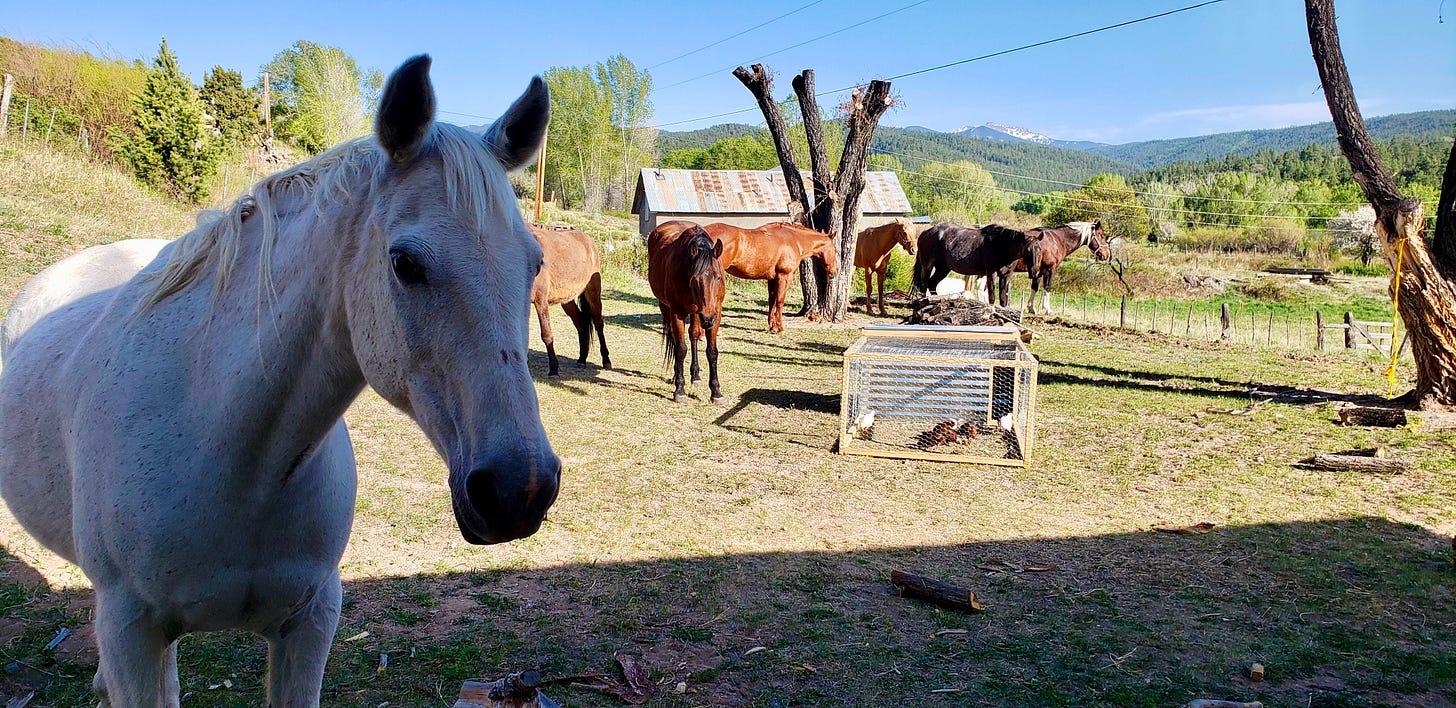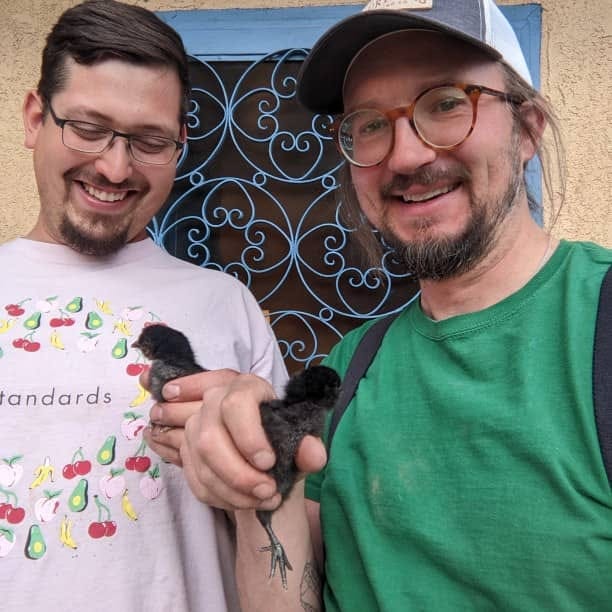The Rooms Where Regular Humans Lived
Living inside thousands of hours of recordings, and what the architecture remembers
I've been living inside thousands of hours of recordings for the past few months. What started as a music curation project, with the goal of finding some tracks to communicate what that project was about, has become something more like an extended meditation on the nature of creative collaboration, the way time works in musical relationships, and how much of our deepest artistic work happens in the spaces between intention and accident.
Each session I feel I’m looking in at a strange, distant intimacy between the musicians in the room, who trusted the process enough to let the recorder run constantly, as we clowned around between songs, discussed structure and craft, and executed awkward transitions and failed experiments.
But more than anything, I keep thinking about the idea that recordings can somehow preserve the spirit in the air at the time of their creation. In the same way that water takes the shape of the space that it fills, music takes the shape of the room where it is created. So, in these archives, I am transported back into the shapes where we worked and played together.
The Architecture of Memory
Going through this archive feels like taking a tour through spaces that no longer exist, at least not for us. Each room has its own acoustic signature, these heavy adobe walls, tile floors, and intervening soft sofas, chairs, and other furniture. Each space also carries an emotional signature for us who were there.
When I hear Nick and me working through a song in my El Valle living room, I'm not just remembering the cold or the way the light fell across that fire-engine-red carpet. I'm inhabiting that acoustic space again, feeling the particular reverb of those plaster walls, the way we found a common voice in that acoustic container.
That El Valle house was where Nick and I first started working together—a tiny mountain village at 8500 feet elevation, a 45-minute drive up curvy mountain roads. He'd drive up every week that the roads were passable, and we'd rehearse in that living room with wood panel inner walls and, most importantly, the wood stove. The wood stove was critical during those brutal winters because, although it was an adobe house, there was no insulation in the floor or ceiling. The relentless mountain wind would pass freely into the attic, down the hollow walls, and through the electrical outlets.
I would load the wood stove and we would try out songs—ones I had written and some classics. We were just starting to work together, but our voices and styles went together perfectly even though we were coming from different places. This is how we recorded "True Form"—bundled up inside, warmed up with an improvisatory exploration, beer, and the simple act of singing together.
How Rooms Shape Sound, How Sound Shapes Memory
Maybe it’s the patina of memory, but there’s something almost mystical about how a room's acoustics affect not just how music sounds, but what music gets made in the first place. The large open space of the living room in El Valle, with the nearly wall-sized picture windows overlooking the enormous mountain valley below the Truchas peaks, felt like the spaciousness we needed to get going.

In the summer, the living room became too hot for afternoon rehearsals, so we'd duck through the low New Mexico doorways to the far back bedroom painted aqua blue on the walls and ceiling. We had a hand-me-down drum kit back there that was occasionally populated by a local musician. That was where we first experimented with multitracking, sometimes closed in from the heat with the trapped cool air from the previous night, sometimes with a cool breeze through the tiny, low windows. Cables snaking everywhere, the main body of "Illumination" was recorded there. We also did work there "in the box"—layering sounds in the computer for take after take—for "Pensive River."
But listening back now, I realize how much each space contributed to what we created—not just as backdrop or setting, but as an essential ingredient in the sound itself. I can identify which room we're in within seconds, not just from the acoustic signature but from the kind of musical choices we made in response to each space,and what was happening in our lives and musical journey together.
The Hallway Sessions
For a brief period, I lived in a small house in Española, down in the valley. It was a transitional time—escaping the house and community where I was trapped during the pandemic, moving down for a new job and new community. I lived in an apartment which was, in essence, a long, narrow hallway built onto one side of the original adobe house. The walls were thick and the floors were hard tile.
A space like that, with parallel, hard surfaces, typically presents the worst acoustic environment. But Nick and I set up in the only place we could, the entryway, and immediately discovered the improbable reality that it had perfect natural reverb—not too much echo, but just enough space to let sound breathe. We rehearsed there for the couple of months that I lived there.
One week, we got a call for art from Abstract Picnic, a Santa Fe artist group I was part of. The call came with a single word prompt: "texture," and we decided to respond. We set up the room recorder right there in the hallway, and just... responded. We agreed to go into "I'll Keep It With Mine" eventually, and so started in the key of that song. Nick picked up his guitar, sat down in front of the high hat, and I grabbed the bass and set my foot on the kick drum pedal.
What emerged was us discovering what "texture" might sound like in real time—layers of sound building, echo delay creating wild overtones, two people translating a single word into music. The beautiful part came when we simultaneously switched to "I'll Keep It With Mine." We'd gone over it once or twice, as that simple Dylan cover was speaking to us at that time. You can hear the exact moment we shifted from abstract exploration to familiar territory, and somehow they feel like one continuous thought. The sound artifact from the delay pedals carry on beyond the experimentation into the song, and ties the two connected pieces together. We loved to create that impossible-to-reproduce drone, something we could shape but not control.
That hallway captured lightning in a bottle during my brief time there. We released that song at the time, our only release while we were actively playing together. So, the most fleeting of our working spaces gave our oldest recording.
The Archaeology of Attention
Another aspect of my deep dive into this archive is remembering again how intimate making music can be. These sessions were never intended for outside ears—we were just documenting our explorations, creating a record of where we'd been so we could remember how to get back there.
The Tascam DR-05X, a two-channel MP3 recorder that we used as a room mic, was accidentally perfect for this kind of archaeological work. It captured everything—the room tone, the chair creaks, the moments between songs. Professional recording techniques would have edited out exactly the connective tissue that now feels most revelatory, and typically presents the final product of the work that it takes to get there.
So, these recordings function like memory. The rooms are real, but they exist now only in these sonic artifacts. When I hear the particular reverb of that Española hallway or the way our voices blended in the El Valle back bedroom, I'm momentarily transported back there, in the space and emotional vulnerability.
Is this a reason why we love music? It’s a chance to hear and feel the emotional resonance, oddly communicated through physical objects: instruments, rooms, and recordings made relevant by our own attunement to others, and perhaps their vulnerability to each other.
What the Rooms Remember
My sense is that architectural spaces hold imprints of the activities they’ve witnessed. For example, I was once in a small mansion in Berkeley, California, that had housed monks through the 80s and 90s. The sense of calm in the house was palpable, especially the room where they conducted their sitting meditation.
I wonder about the rooms where we played—what of ours did they absorb, and how do they feel now?
When I listen to these recordings, I'm convinced that something essential was preserved—not just our performances, but a specific quality based on the time and place. The thin mountain breeze, or fading evening light through the tiny bedroom studio, or the crickets starting to chirp at twilight, and the way that being in aqua blue for hours makes you feel. I also hear, more importantly, the feeling of creative safety that can only emerge when you're making music in a space that feels like home, even temporarily.
It strikes me that these room-based recordings feel democratic. We weren't trying to recreate the sound of famous studios or chase some idealized acoustic environment. We were just working with whatever spaces were available to us—living rooms, bedrooms, hallways, kitchens. But that limitation turned out to be a gift. Each room forced us to adapt, to find creative solutions, to discover possibilities we may not have found in a recording studio, even if we could have afforded it.
The rooms where it happened are gone now, at least for us. But they live on in these recordings, still shaping how people hear and respond to the music. They’re still collaborating with us, across time and distance, in the ongoing project of making meaning from sound.
The archives have yielded three full albums of material, much more than I was anticipating. Regular comes out August 19, 2025, with Humans and Regular Humans in the fall and spring, respectively. The first two are cuts from rehearsals, shows, and other various settings. The final album was multitracked at our home studio. Sign up for my email list at Khomabrut.com for a free copy of Regular, or head to bandcamp to pre-order the others.
What rooms have shaped your creative practice? I'm curious about the spaces that have been essential to your own artistic development—whether for music, writing, visual art, or any other form of making.


